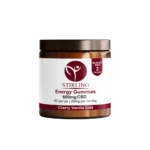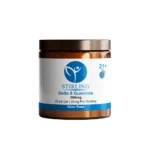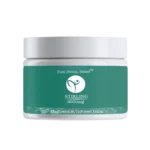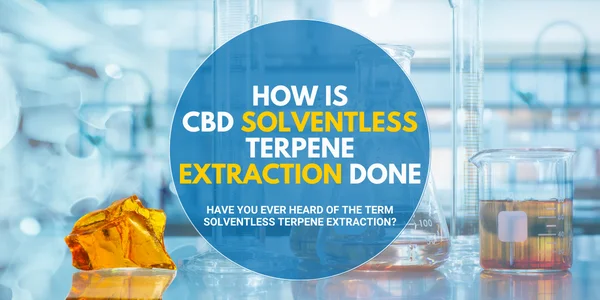Have you ever heard of the term solventless terpene extraction? How about ethanol extraction? Because most of the time, extraction methods are not the main concern of many consumers. The same goes when buying CBD products. We rarely think about how they are made.
The focus usually is on the product description, the packaging, and its benefits. In 2018 research, it’s revealed that a whopping 52.5% do not even read the ingredients in a product.
The effectiveness of any product depends on how it’s made – especially in the CBD industry. Extracting the essential cannabinoid compounds from the hemp plant is critical to make an effective product.
As a CBD consumer, you must be aware of these extraction methods. Because these affect, not only the end product but also the health benefits of you are getting.
Common CBD Extraction Methods
There are two main types of extraction available for CBD producers today, minus Stirling’s own Solventless Terpene Extraction.
These two methods are divided according to the techniques used in the production process. They also play a big part in what products are readily available in the market.
Currently, all other CBD companies use solvents to extract cannabinoids from the plant – and these extraction methods have many problems. Understanding these problems was critical to Stirling’s development of a revolutionary new process. It’s necessary to get some background information first on what extraction methods are available in the industry.
Solvent-Based Extraction
Solvent-based is the most common extraction used by large companies. The process requires using chemical solvents to help separate the trichomes from the biomass. Examples of these chemicals include ethanol, carbon dioxide, and butane.
Different Types of Solvent Based Extraction
- Ethanol Extraction
- Cold Ethanol Extraction
- Warm Ethanol Extraction
- C02 Extraction (Supercritical CO2 Extraction)
- Butane Hash Oil Extraction
Non-Solvent Based Extraction (Stirling’s Process)
For this type of extraction, no chemicals are used. Typically machines and other tools are used to separate the trichomes
from the plant. Below are examples of non-solvent-based
extraction:
-
- Cold Pressed Extraction
- Hash
- Rosin
Problems with the Solvent-Based CBD Extraction Methods
With many extraction methods available in the market, it is a surprise that many are only so many viable options for mass-scale CBD production. We’ve listed down four issues solvent-based methods are faced with:
- Low yield – many solvent and non-solvent extraction produce inadequate yields. The amount of biomass and time needed to extract cannabinoids from the hemp plant make the process tiresome. In the case of solvent-based methods, additional equipment and a higher volume of chemicals are required to produce more extracts.
- High Cost of Operation – solvent-based extraction requires different equipment to produce ample extract. For BHO, the expense doesn’t end with the equipment but also the infrastructure. Butane is highly flammable. Facilities where BHO extraction is done need higher safety standards compared to the rest. All these necessities in processing add up and make the whole production process expensive.
- Compromise On Purity – conventional methods often expose biomass to chemicals, heat, and other environmental factors that can affect the quality. Pure CBD extracts are hard to produce. The manpower and resources needed to create pure extracts from conventional extraction are not viable for mass production. If pursued, end users like you would have to shoulder the weight of the production costs.
- High Risk of Contamination – both solvent methods expose the plant matter to contaminants that, when not processed well, can negatively affect health. Butane used in BHO, if not properly filtered, can become a health hazard to people.
Solventless Cavitation Method
All the stumbling blocks of conventional cannabinoid extraction methods led to the development of a new way to extract CBD. Stirling partnered with Cavicann to integrate their unique extraction machine into the company’s operations.
What is Solventless Extraction?
From the name itself, the process does not involve using solvents or any other chemical to separate the cannabis compounds. It is an innovative process that uses traditional Hash and Rosin processing and efficient machinery to extract cannabinoid compounds.
The machine causes a process called cavitation to start. This unique process allows the trichomes to separate from the plant matter without needing solvents.
How is it Done?
1. Biomass Preparation
The first step in the extraction process is getting high-quality plant material. Stirling uses hemp leaves and flowers from local authorized cannabis farms in North Carolina.
The biomass is washed and chopped into fine pieces. The chopped biomass is then placed in a stainless steel sealed container.
2. Ice Water Submersion
Ice-cold water fills the stainless steel container until it submerges the biomass completely. The freezing temperature solidifies the trichomes, separating them from the plant matter easier.
Trichomes are the small outgrowths of the hemp plant. It contains a considerable percentage of the plant’s essential compounds.
3. Cavitation Blast
A powerful specialized machine attached to the stainless steel container then blasts the biomass. The billions of air bubbles and the sheer kinetic force separate the trichomes from the other biomass.
Stirling and Cavicann developed this specialized one-of-a-kind machine. Only Stirling uses this machine to mass produce CBD and other Cannabinoid products.
The targeted process allows cleaner, more distinct separation of cannabinoid compounds and common plant material.
4. Filtering
The ice water containing the biomass and separated trichomes pass through a 40-micron filter. The extremely fine filter allows proper separation of the CBD and other cannabinoid extracts from unwanted plant material.
Other processes, like those of ethanol or butane, use additional chemicals to extract the plant matter. But, despite the chemical use, certain compounds remain.
Stirling’s process allows for a more organic and thorough way of removing other compounds like chlorophyll from cannabinoids. The result is a large concentration of pure cannabinoid extract.
5. Final Processing
Finally, the last stage of the processing is splitting up one Cannabinoid compound type from another. The organic process results in a variety of compounds extracted from the biomass. Additionally, Pure extracts like CBD, CBGA, CBN, CBDA and full spectrum ones with all the compounds are present.
The purity level achieved by the Solventless Cavitation process is challenging for conventional extraction methods to replicate.
What CBD and Other Cannabinoid Products Can Be Produced?
The final extracts from Solventless Cavitation Process produce a wide array of products. The products range from CBD gummies and lotions to water-soluble CBGA/CBDA liquid mixes.
Using its unique extraction method, there is no cap on what products Stirling can make for customers like you. Just recently, Stirling has released two new CBD gummies – energy gummies and immunity ones. Moreover, it has added new roll-ons to its potent CBD cream and lotion line.
Bottomline
Stirling’s very own process allows it to steer clear of the pitfalls of common extraction methods. The unique Solventless Cavitation system allows for a more efficient, scalable, affordable, and environmentally friendly process of harvesting CBD and cannabinoids.
As the consumer, having knowledge and even being familiar with the different extraction methods will lead to you making more informed and calculated buying decisions.

























